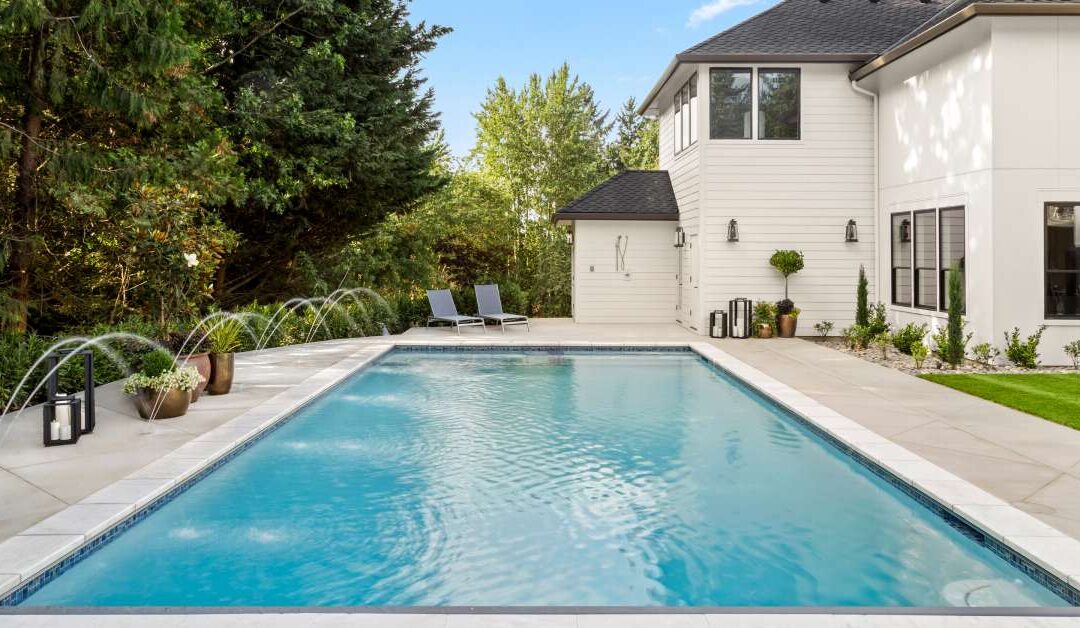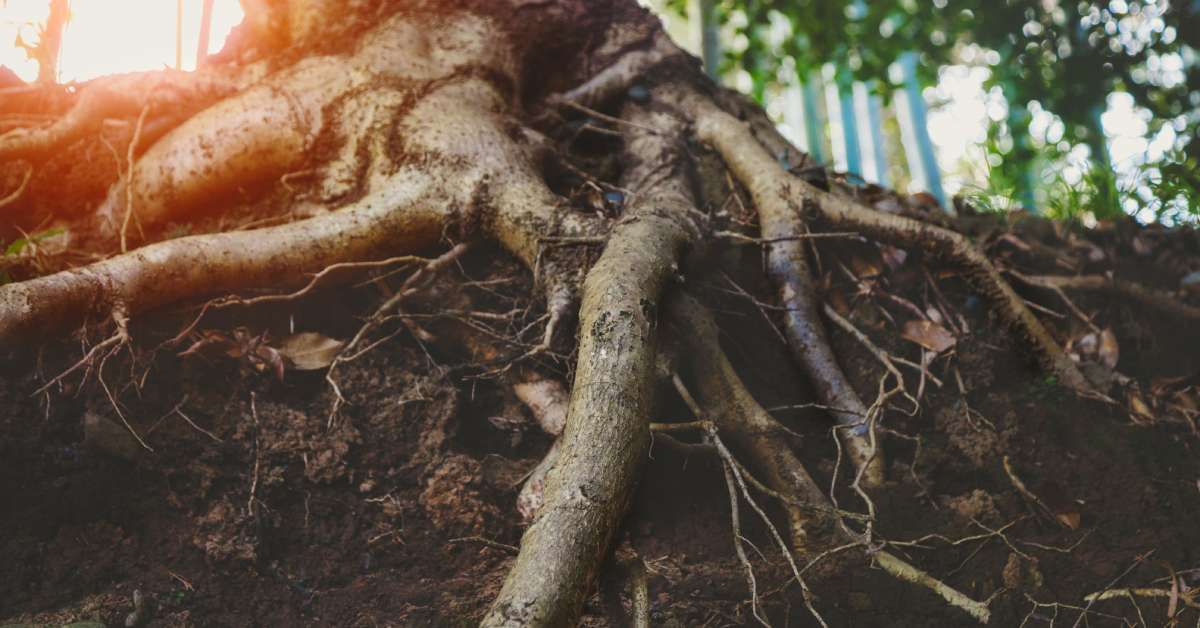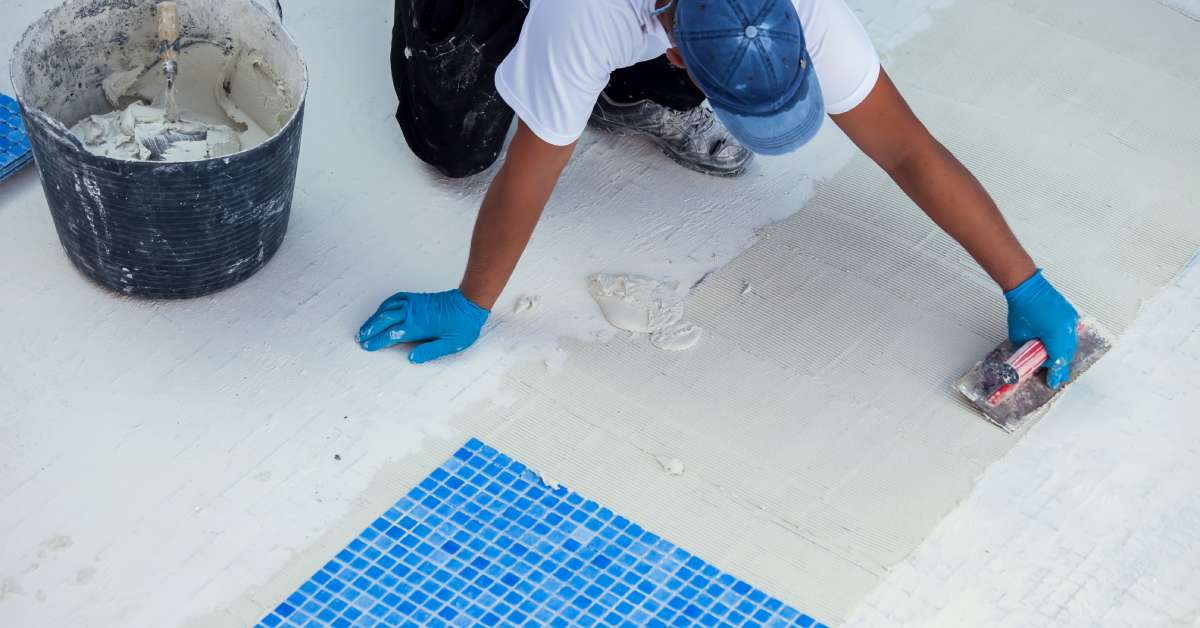A swimming pool foundation is the base structure that supports the entire pool, providing stability and strength to the pool’s walls and floor. The foundation evenly distributes the weight of the water and pool structure to prevent shifting or settling. Foundation damage or instability can lead to structural issues, leaks, and safety hazards. Understanding the causes of pool foundation damage can help you more easily maintain your pool’s appearance, safety, and longevity.
Poor Drainage or Water Accumulation
Excess water accumulating around the pool can put pressure on the foundation, leading to erosion, shifting, or weakening of the concrete structure over time. When concrete absorbs an excessive amount of water it can cause the concrete to crack and deteriorate.
Poor drainage creates additional health and safety risks. Excessive water can create slippery surfaces around the pool area, increasing the risk of accidents and injuries from slips and falls. Additionally, standing water can attract pests and insects, leading to further maintenance issues and potential health concerns.
Take the following steps to prevent water from accumulating around the pool:
- Ensure the pool deck is sloped away from the pool to promote water runoff and prevent pooling.
- Install a French drain or a perimeter drain system around the pool to redirect excess water away from the area.
- Implement landscaping features like swales or grading adjustments to direct surface water away from the pool.
- Consider using permeable paving materials around the pool to allow for better water absorption and drainage.
Soil Movement or Settlement
Soil movement refers to the horizontal shifting of soil, while soil settlement is the vertical sinking or compression of soil. When soil shifts or settles under or around a swimming pool, it can cause the foundation to sink and become uneven, leading to cracks, tilting, or damage to the pool structure. It affects concrete pool foundations by creating stress points, weakening the integrity of the foundation, and potentially compromising the stability and safety of the entire pool.
If you notice cracks in the pool walls or deck or uneven settling around the pool area, contact a professional pool repair specialist. They will assess the extent of the damage and provide pool foundation repair that stabilizes the soil.
URETEK Pool Repair
URETEK handles pool repair projects by injecting a specialized polymer beneath your pool to raise and stabilize its structure. This expanding polymer bolsters weak soil to prevent structural damage and potential sinking of the pool, ensuring long-term stability. Our patented polyurethane foam also rectifies voids, which are gaps in the soil, for a lasting and durable repair.
Our method also gives you the benefit of seamless pool deck restoration with minimal disruption. We will drill penny-sized holes into the pool’s concrete, then regrout after injection. With no digging or heavy machinery required, our method guarantees your pool will be back in service faster than invasive repair methods.
Tree Roots Invading the Foundation
Encroaching tree roots are another cause of pool foundation damage. As trees grow, their roots can extend far beyond the tree’s canopy, sometimes reaching your pool area. These roots can put pressure on the pool’s foundation, causing cracks and other forms of damage.
Choosing the right location for your pool can mitigate this risk. Avoid placing your pool too close to large trees and consider the potential growth of nearby saplings.
If you notice tree roots encroaching on your pool area, consider consulting a professional arborist to assess the situation and recommend appropriate measures. Root pruning or installing a root barrier can help manage root growth and prevent damage to the pool foundation.
Freeze-Thaw Cycles
When water in the soil around your pool freezes, it expands, putting pressure on the foundation. When the ice melts, the soil contracts, leading to instability. Additionally, if the pool’s concrete has absorbed water, the freeze-thaw cycle can cause cracks to form in the concrete.
To protect your pool from freeze-thaw damage, ensure proper drainage around the pool to prevent water accumulation, especially during freeze-thaw conditions. Use a pool cover in winter to shield the pool from extreme temperature changes and consider applying a waterproof sealant to the concrete surfaces to reduce water penetration and minimize the impact of freeze-thaw cycles.
Chemical Damage from Pool Maintenance Products
Routine pool maintenance helps keep the water clean and safe, but improper use of chemicals can damage the foundation. Overuse or incorrect application of strong acids or high concentrations of chlorine can corrode the concrete, weakening its structure and leading to cracks or deterioration.
Additionally, failure to maintain proper chemical balance in the pool water can result in aggressive chemical reactions with the concrete, causing etching, discoloration, and overall degradation of the foundation over time. Acidic water can create pits in the concrete that can collect dirt, debris, and bacteria, becoming breeding grounds for contaminants that can compromise water quality and pose health risks to swimmers.
To prevent chemical damage, follow manufacturer guidelines when using pool maintenance products. Regularly checking and balancing the pool’s chemical levels can also prevent excessive wear on the foundation materials. Using less corrosive chemical alternatives and employing proper chemical storage methods can further protect the pool’s integrity.
Incorrect Pool Installation or Design
Incorrect installation or poor design increases the risk of structural instability and damage over time. Professional installation by experienced contractors ensures that the pool is built to withstand environmental pressures. These experts consider crucial design factors, such as soil type and drainage needs, for long-term stability.
The following factors related to pool installation and design can impact the foundation’s longevity:
- Inadequate compaction: Improper compaction of the soil beneath the pool can lead to settling and shifting, impacting the foundation.
- Lack of proper drainage: Insufficient drainage systems can result in water accumulation around the pool, causing hydrostatic pressure on the foundation.
- Incorrect placement of pool equipment: Placing heavy equipment on unstable ground can lead to uneven pressure on the pool’s foundation, leading to structural issues.
- Poorly designed expansion joints: Inadequate or improperly placed expansion joints can result in cracking and movement in the concrete, affecting the foundation’s stability.
Structural Defects or Aging of Materials
Structural defects, whether from the initial construction or due to natural aging, can compromise the pool foundation. Materials like concrete and metal can deteriorate over the years, leading to weakened structural integrity and potential failure.
Regular inspections are vital for identifying early signs of structural defects or aging. Cracks, rust spots, and other visible damage should be addressed promptly by professionals. Reinforcing the foundation with modern materials and techniques can extend the lifespan of your pool.
Maintaining the integrity of a swimming pool’s foundation is crucial for its longevity, safety, and appearance. Owners can protect their pools by addressing the primary causes of foundation damage, such as soil movement, poor drainage, and chemical corrosion. Perform regular inspections and book professional maintenance and repair services to keep your pool in its best shape.



